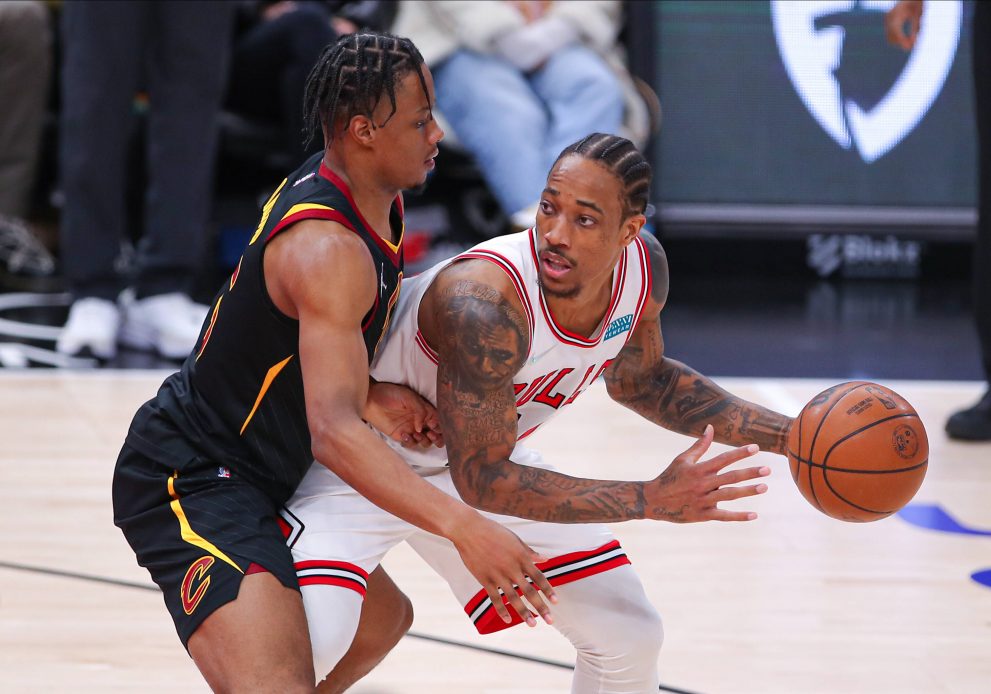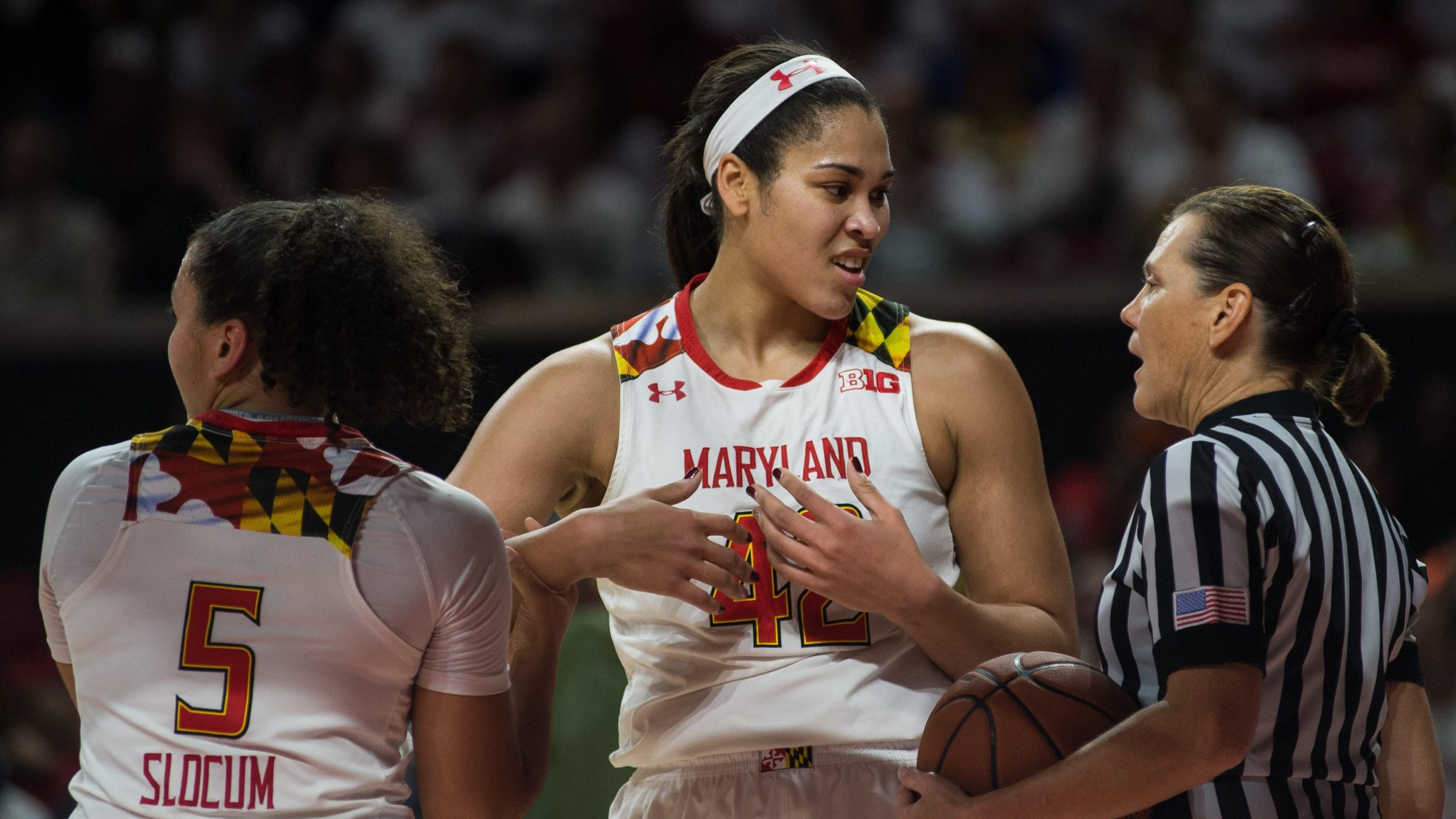A few months ago, the free agency signing of DeMar DeRozan by the Chicago Bulls was considered by many to be a questionable move: an aging former All-Star to a team considered to be just a fringe playoff contender.
Many felt it was a sideways move for both player and franchise. Months later, the Bulls have emerged as a surprise sleeper pick out of the east while DeRozan has ascended to MVP contender status. The background of this magical season is tremendous work from DeRozan over the last two seasons.
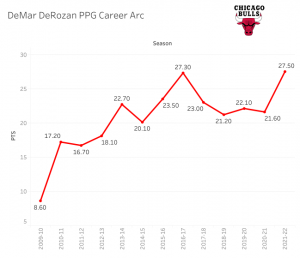
One of the main reasons? DeRozan’s playstyle was tweaked for the better by his three-season San Antonio spell under future Hall of Fame coach Gregg Popovich. From the 18-19 season to the 20-21 season, DeRozan’s usage rate dropped every year as he had to adjust his game in many ways to fit the Spurs’ culture.
This included playing with a new type of co-star, from Kyle Lowry in Toronto to LaMarcus Aldridge in San Antonio. DeRozan became a more unselfish player in the Spurs’ pass-heavy offense, adjusted to Popovich changing his position from a shooting guard to a forward, and took his defensive contributions up a level as good defense is part of the Spurs’ tradition.

DeRozan became the designated clutch shooter for what was a super young Spurs team toward the end of his tenure and even led the team in assists in his last season with a career high.
The DeRozan who went into the Spurs’ machine as a Toronto Raptor and the DeRozan that came out and signed with the Chicago Bulls are two entirely different players.
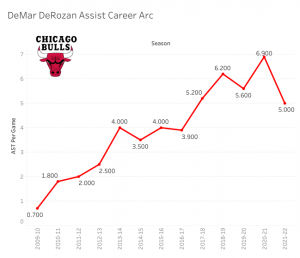
All the improvements DeRozan had made to his game didn’t come to fruition with the Spurs, as both parties were going in totally different directions. The Spurs were hitting a hard reset toward rebuilding while DeRozan felt he had more to give on a contending team. The decision to move on felt right for all parties involved.
The New And Improved DeMar DeRozan
The improvements DeRozan made in San Antonio are being applied to this current Bulls team. DeRozan’s arrival has led to the team taking a step forward. Taken at the surface, DeRozan doesn’t seem to be any different.
He is still the shooting option as he was with Toronto and the Spurs, but his improved understanding of the game makes him a totally different player. Playing in a multi-ball-handler system with the Spurs has made his transition to the guard-heavy Bulls team seamless.
The reps DeRozan developed as the closer on the Spurs are paying dividends this season, where he has emerged as one of the league’s most reliable buckets down the stretch. And his improved understanding of team play has made him a better team defender even if he still struggles in individual one-on-ones.
DeRozan also helps the Bulls shoot well by dominating in the mid-range as Zach LaVine/Lonzo Ball lurk as three-point threats while leaving the rim open to the various rim drivers the Bulls have such as LaVine/Ayo Dosunmu/Alex Caruso.
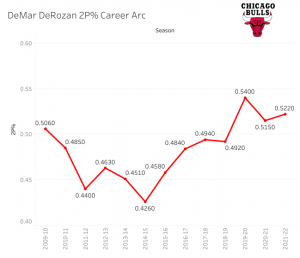
The shooting graph below displays DeRozan’s shooting stats for his first All-Star season vs. his fifth (this season). DeRozan has let go of the idea of being an all-around elite shooter and focused more on his strength, which happens to be two-point attempts (at the rim and mid-range shots).
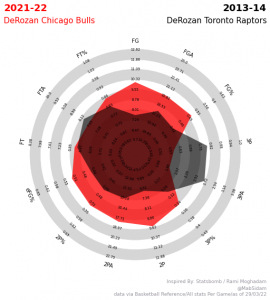
This cut-down on threes has improved DeRozan’s percentages as a shooter. The graph also shows how much DeRozan has evolved over the last nine years. He used to be an inefficient gunner from shooting guard but has evolved into a potent wing-power forward in this current small-ball era.
The upcoming playoffs are an opportunity for DeRozan to cement his newfound status as one of the NBA’s elite by putting to bed all claims that he shrinks in the playoffs. The DeRozan who consistently flamed out on the Raptors is still fresh in people’s minds.
But DeRozan has made serious strides in his game, and this postseason is a chance to introduce fans to the polished and evolved version of DeMar DeRozan.
